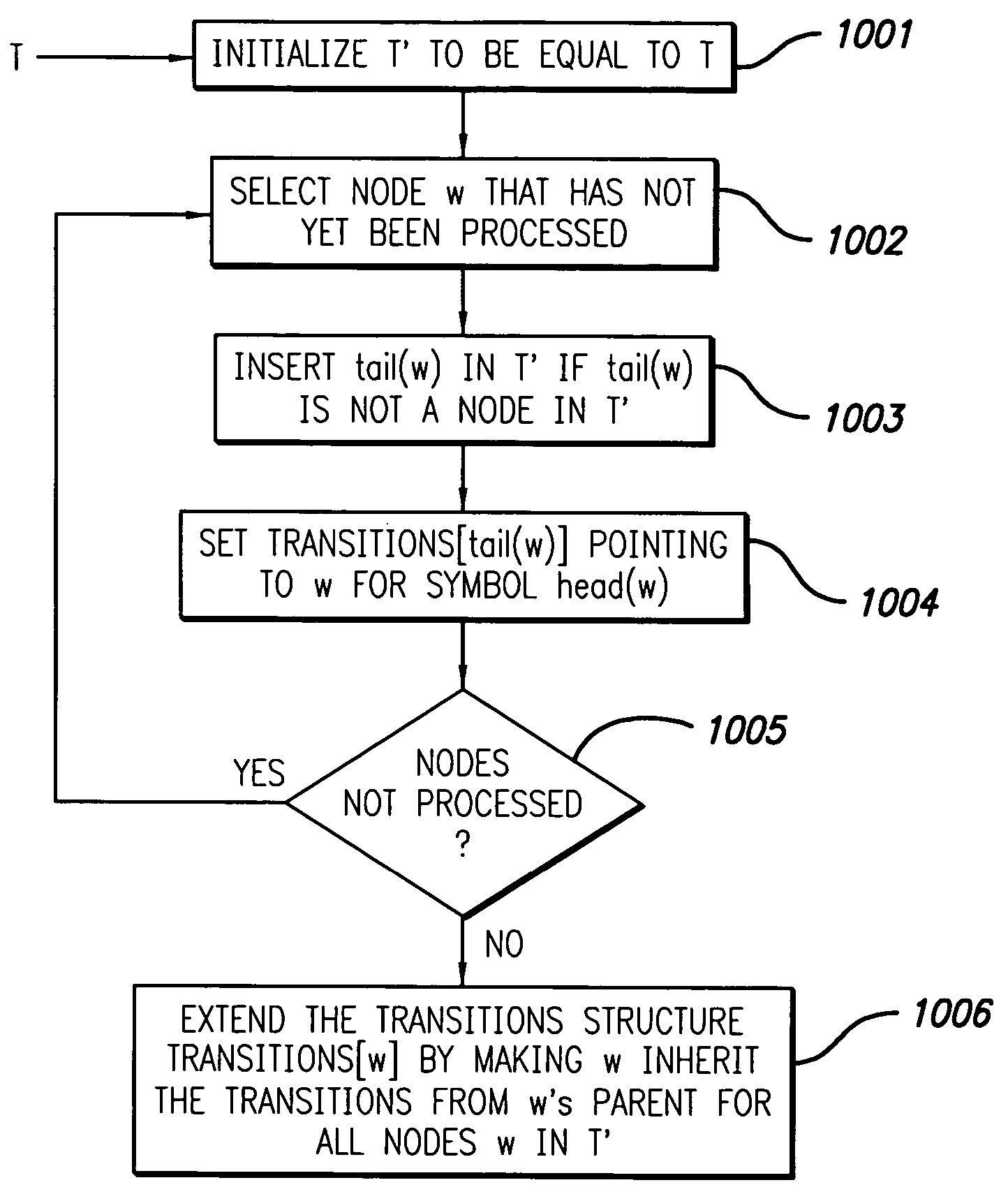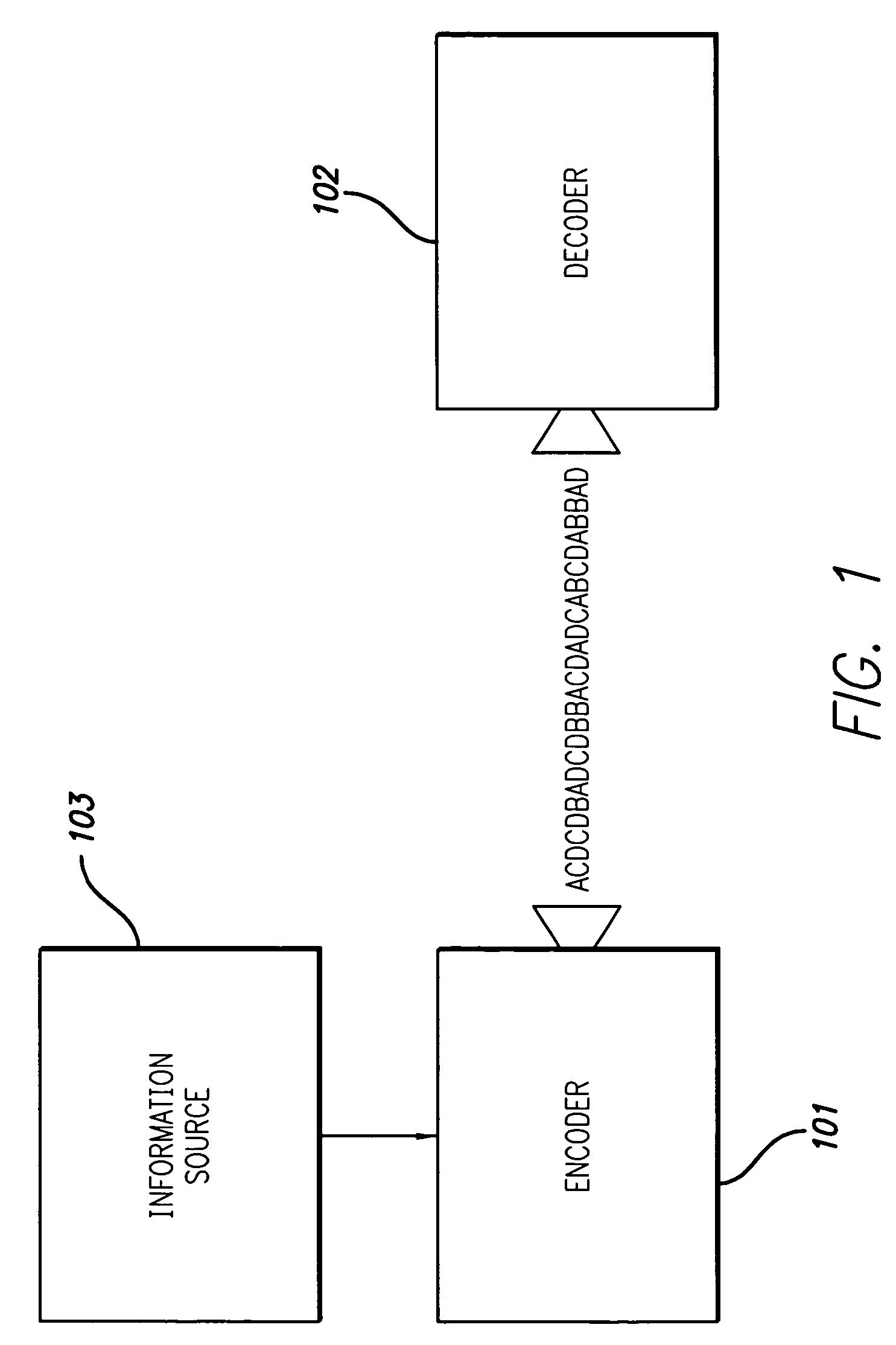FSM closure of generalized tree models
a generalized tree model and closure technology, applied in the field of data structure employed in symbol prediction, can solve the problems of insufficient knowledge of current state and next input symbol to determine the next sta
- Summary
- Abstract
- Description
- Claims
- Application Information
AI Technical Summary
Benefits of technology
Problems solved by technology
Method used
Image
Examples
Embodiment Construction
[0030]The present design operates by taking a source, constructing a Generalized Context Tree (GCT) that models the source, optionally refining the GCT by adding leaves and / or internal nodes, where necessary, such that the refined GCT has a finite state machine (FSM) property. These additions are referred to as computing a “FSM closure” on the GCT, thereby forming a resultant tree. Intermediate trees may be formed in the process, such as when filling the GCT with leaves and / or internal nodes. The present design may alternately be considered to receive a string, build a suffix tree of the string in reverse order, prune the suffix tree to form a pruned tree, and build a finite state machine (FSM) closure of the pruned tree to form an FSM closed tree. The present system may also provide information about the pruned tree to a decoder, which can reconstruct the FSM closure and utilize the tree in various ways. Tree construction, encoding, and reconstruction processes may operate in a tim...
PUM
 Login to View More
Login to View More Abstract
Description
Claims
Application Information
 Login to View More
Login to View More - R&D
- Intellectual Property
- Life Sciences
- Materials
- Tech Scout
- Unparalleled Data Quality
- Higher Quality Content
- 60% Fewer Hallucinations
Browse by: Latest US Patents, China's latest patents, Technical Efficacy Thesaurus, Application Domain, Technology Topic, Popular Technical Reports.
© 2025 PatSnap. All rights reserved.Legal|Privacy policy|Modern Slavery Act Transparency Statement|Sitemap|About US| Contact US: help@patsnap.com



